- Home
- The Spring Garden
- Tulips
Tulips Bring Brilliant Color and Elegant Form to the Spring Garden
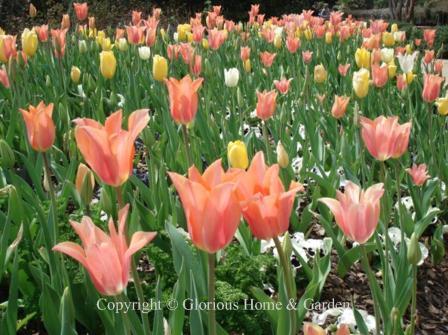
Tulips are one of my most eagerly anticipated arrivals in the spring garden. The glorious brilliant colors and forms shout spring and should not be missed. Tulips are easy to grow and lend themselves to beds, borders, containers, and window boxes. They can be dotted in a perennial border as accents, or densely planted in groups for swathes of color. The different types can be planted together for a succession of bloom to harmonize with other colors, or for a continuation of a specific color scheme. As an example, a lovely succession of white tulips could be ‘White Marvel,’ a Single Early for starters, continuing with ‘Mondial,’ a Double Early, then ‘Francoise,’ a Triumph and ‘Hakuun,’ a Darwin Hybrid for mid-season and finish up with ‘White Triumphator,’ a Lily-Flowered, ‘Maureen,’ a Single Late, ‘Mount Tacoma,’ a Double Late, and ‘Honeymoon,’ a Fringed tulip. It is a nice idea anyway to plant tulip bulbs with early, mid, and late bloom times to extend the season.
One issue with tulips is that they are not always reliably perennial, especially in warmer climates. In fact, in the South they are usually treated as annuals and replanted each year. This does give the opportunity to change color schemes. There are some groups that perennialize better than others including the Darwin Hybrids, Triumphs, Fosterianas, Kaufmannianas, Greigiis, and the wild species tulips. A couple that I have had luck returning for several years were ‘Negrita’ and ‘Happy Generation,’ both Triumphs. If trying to naturalize tulips, it is important not to remove or mow over the foliage until it has browned and died away naturally to allow it to feed the bulbs for the following year.
One nice way to grow tulips since many of them do not return reliably year-after-year, is to plant them in containers. This is easy to do and makes for a beautiful display especially when grouped together. Plant the bulbs in containers in the fall—best time is late October-early November—and don’t be afraid to plant them closely in the pot, closer than you normally would in the garden. Use a good quality potting mix, water, and wait for spring. Another way to do it is to plant a “bulb lasagne”—layered bulbs that will bloom in succession. Place a few broken pieces of old pot on the bottom for good drainage, then plant a layer of bulbs about 8” deep about a bulb’s width apart, cover with about 4” of good potting soil or compost, plant a second layer the same way, add 4” more soil and add a third layer if desired, or top off with pansies or violas. A mixture of bulbs can be planted with the latest bloomers on the bottom, mid-season in the center and earliest on top. So, it could be a succession of tulips, or a mixture of tulips, daffodils and smaller bulbs like crocuses or grape hyacinths. A lovely way to display spring bulbs!
Tulips have been classified into 15 divisions determined by their shapes, growth habits, and bloom times.
Division 1: Single Early Tulips
Single Early, Zones 3-8. Early flowering on short stems, and often scented. Selections include 'Apricot Beauty,' pink; 'Beauty Queen,' pale pink; 'Bestseller,' coppery orange flushed with rose; 'Couleur Cardinal,' red flushed with rose on outside; 'Duchesse de Parma,' scarlet edged with yellow; 'Keizerskroon' ("Emperor's Crown") yellow w/bright red; 'Sunny Prince,' yellow; 'White Elegance,' white.
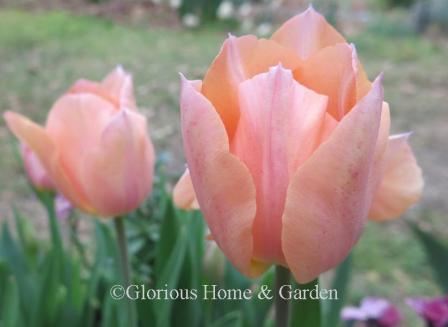 Tulipa 'Apricot Beauty'
Tulipa 'Apricot Beauty'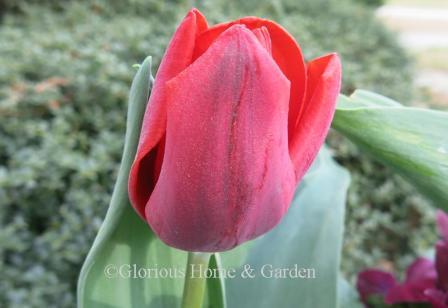 Tulipa 'Couleur Cardinal'
Tulipa 'Couleur Cardinal'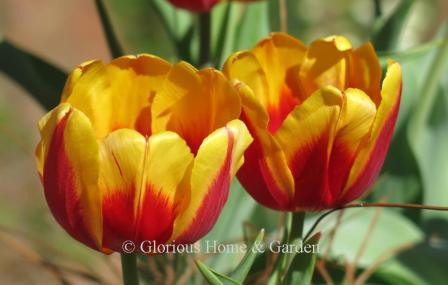 Tulipa 'Keizerskroon'
Tulipa 'Keizerskroon'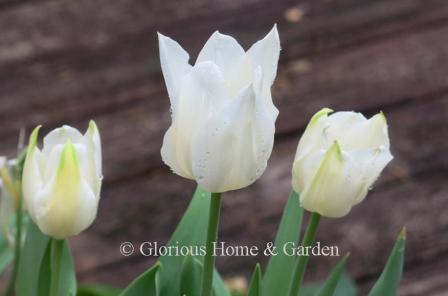 Tulipa 'White Elegance'
Tulipa 'White Elegance'Division 2: Double Early Tulips
Double
Early, Zones 3-7. Double Early tulips
bloom early in the season like their single cousins but with multiple petals,
and are often fragrant. Cultivars include 'Alice Leclercq,'
orange-red with yellow edge; 'Foxy Foxtrot,' shades of gold, amber and rose; 'Melrose,' rose and cream; 'Mondial,' white; 'Monte Carlo,' yellow; 'Password,' white flushed pink with yellow flames; and 'Showcase,' purple.
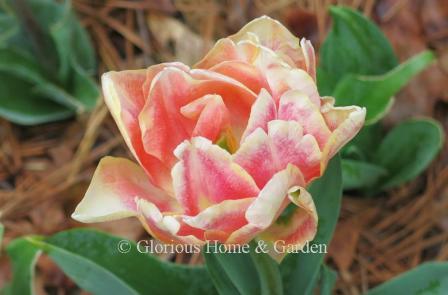 Tulipa 'Foxy Foxtrot'
Tulipa 'Foxy Foxtrot'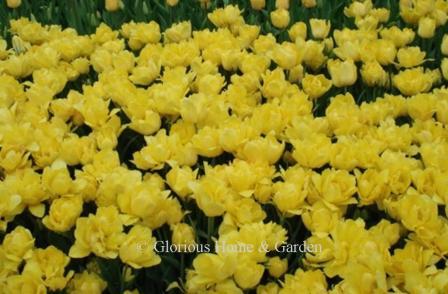 Tulipa 'Monte Carlo'
Tulipa 'Monte Carlo'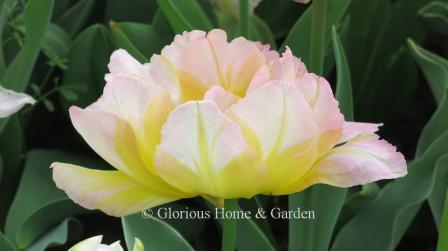 Tulipa 'Password'
Tulipa 'Password'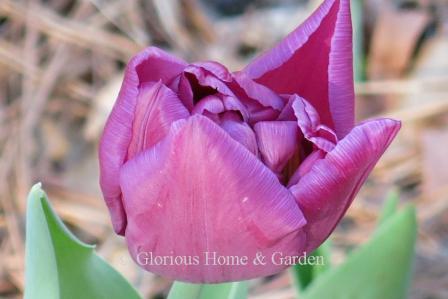 Tulipa 'Showcase'
Tulipa 'Showcase'Division 3: Triumph Tulips
Triumphs, Zones 3-7. Triumphs were developed from crosses between Early Single and Darwin Hybrid tulips, bloom mid-season, and will often return year after year. Some notable hybrids are 'Bastogne,' red; 'Calgary,' white suffused with yellow; 'Gander's Rhapsody,' pink; 'Gavota,' maroon and yellow; 'Happy Generation,' white with red and yellow blotch in center, is show below (the leaves are also edged in white); 'Leen van der Mark,' red w/white edges; 'Negrita,' purple; ‘Pretty Princess,’ rose pink w/orange and purple flames and a touch of green; ‘Prinses Irene,’ a glorious combination indeed of orange, purple flames, and a bit of yellow and green; ‘Slawa,’ burgundy with apricot edges; ‘Spitzbergen,’ white and deep purple; and 'Tom Pouce,' bright pink with yellow base.
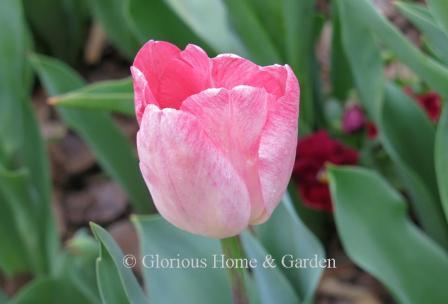 Tulipa 'Gander's Rhapsody'
Tulipa 'Gander's Rhapsody'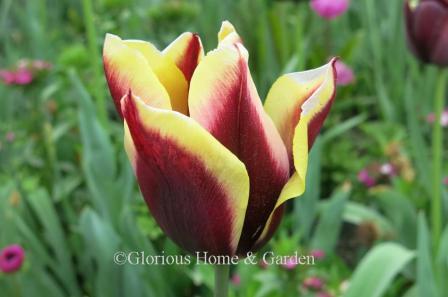 Tulipa 'Gavota'
Tulipa 'Gavota'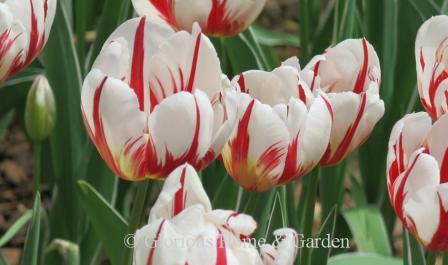 Tulipa 'Happy Generation'
Tulipa 'Happy Generation'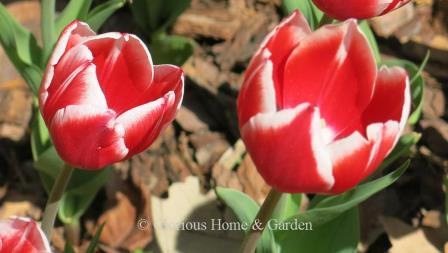 Tulipa 'Leen van der Mark'
Tulipa 'Leen van der Mark'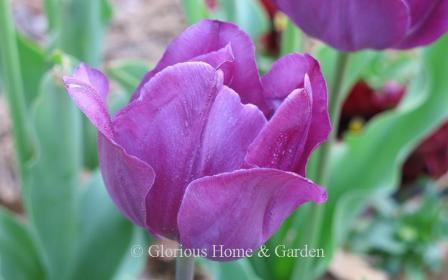 Tulipa 'Negrita'
Tulipa 'Negrita'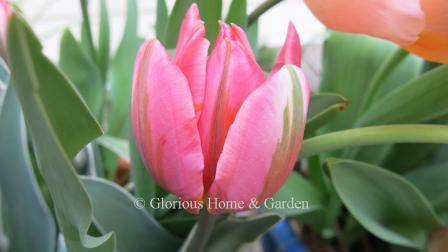 Tulipa 'Pretty Princess'
Tulipa 'Pretty Princess'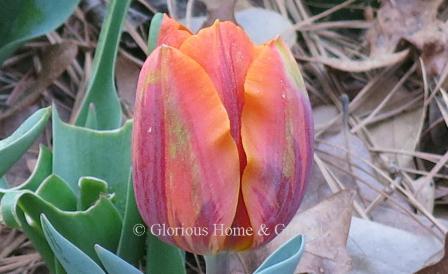 Tulipa 'Prinses Irene'
Tulipa 'Prinses Irene' Tulipa 'Slawa'
Tulipa 'Slawa'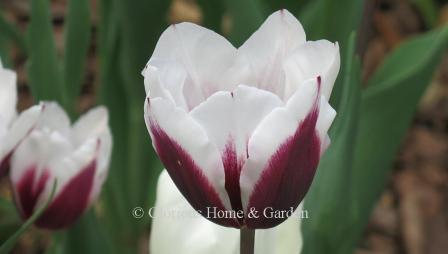 Tulipa 'Spitzbergen'
Tulipa 'Spitzbergen'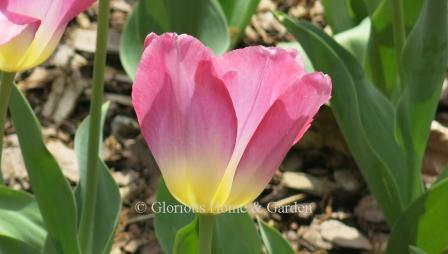 Tulipa 'Tom Pouce'
Tulipa 'Tom Pouce'Division 4: Darwin Hybrid Tulips
Darwin Hybrids, Zones 3-7. Darwin Hybrids have large flowers with the classic goblet shape on sturdy stems and bloom at the height of the tulip season in late April to May.If you are looking for yellows, oranges, and reds, there are a lot to choose from in this group. There are many outstanding cultivars including 'Akebono,' yellow with think red edge; 'Apeldoorn' red; '’Beauty of Spring,’ yellow w/red edge; ‘Daydream,’ a color changer opening yellow and maturing to orange; Gudoshnik' yellow streaked with rose-red giving an overall salmon-ish look (interesting in that each flower is slightly different--some may be more yellow, some more red); 'Holland's Glory,' red; ‘Ivory Floradale’ (also known as ‘Cream Jewel’), white and cream; ‘Jaap Groot,’ yellow; 'Pink Impression,’ pink; 'Red Impression,' red; 'Salmon Impression,' salmon-apricot; ‘World’s Favorite,’ orange-red with narrow yellow edge.
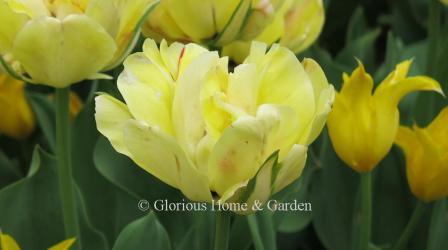 Tulipa 'Akebono'
Tulipa 'Akebono'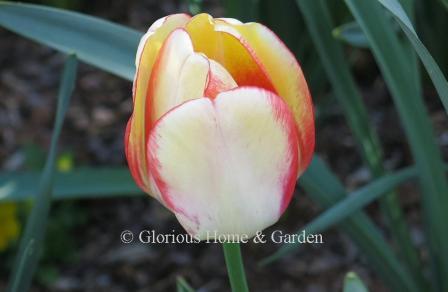 Tuiipa 'Beauty of Spring'
Tuiipa 'Beauty of Spring'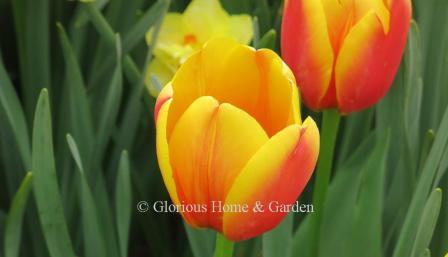 Tulipa 'Daydream'
Tulipa 'Daydream'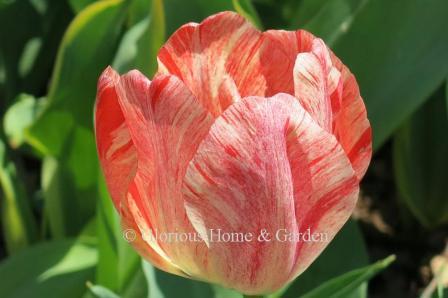 Tulipa 'Gudoshnik'
Tulipa 'Gudoshnik'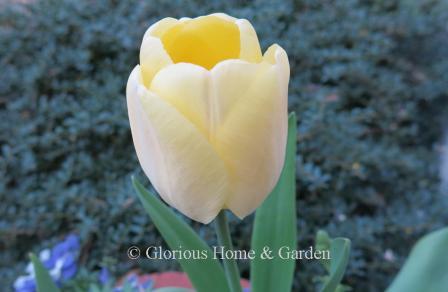 Tulipa 'Ivory Floradale' (also called 'Cream Jewel')
Tulipa 'Ivory Floradale' (also called 'Cream Jewel')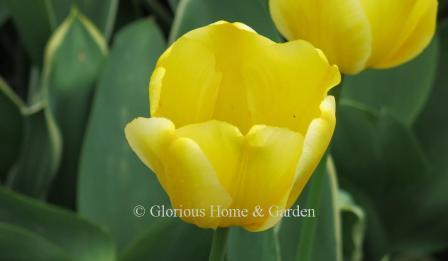 Tulipa 'Jaap Groot'
Tulipa 'Jaap Groot'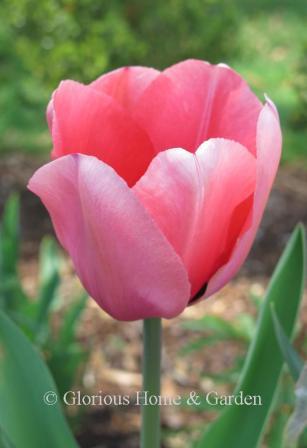 Tulipa 'Pink Impression'
Tulipa 'Pink Impression'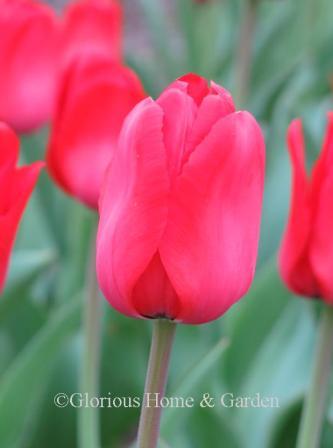 Tulipa 'Red Impression'
Tulipa 'Red Impression'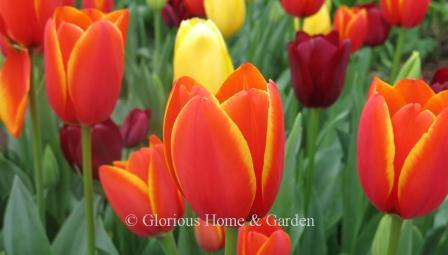 Tulipa 'World's Favorite'
Tulipa 'World's Favorite'Division 5: Single Late Tulips
Single Late, Zones 3-8. These tall, late-blooming tulips are the aristocrats of the spring garden. They have the classic, elegant goblet shape that one associates with tulips. Many favorites are here including 'Avignon,' red; 'Bleu Aimable,’ lilac-blue; Blushing Lady,' yellow flushed with pink; 'Maureen,' pure white; 'Menton,' pink; 'Mrs. John T. Scheepers ,' yellow; 'Perestroyka,' orange-raspberry; 'Queen of Night,' deep purple; 'Renown,' deep pink; 'Sorbet' white with raspberry flames; and 'Violet Beauty,' violet-purple.
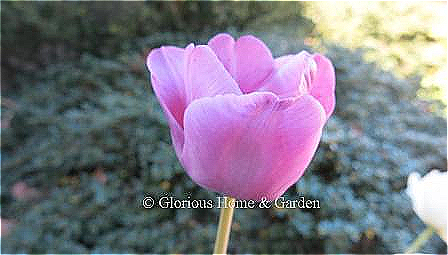 Tulipa 'Bleu Aimable'
Tulipa 'Bleu Aimable'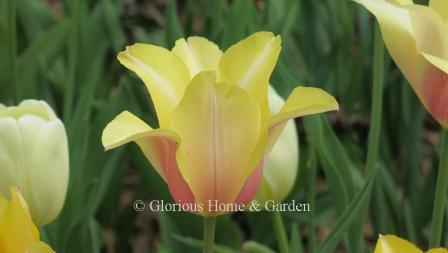 Tulipa 'Blushing Lady'
Tulipa 'Blushing Lady'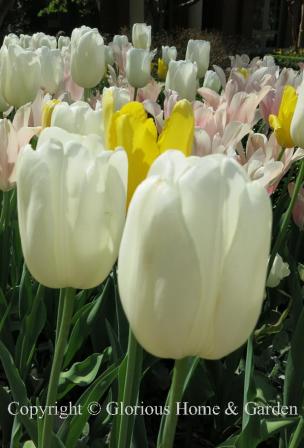 Tulipa 'Maureen'
Tulipa 'Maureen'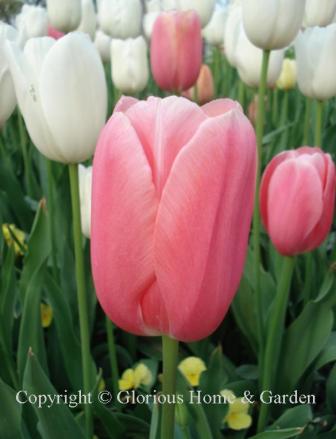 Tulipa 'Menton'
Tulipa 'Menton'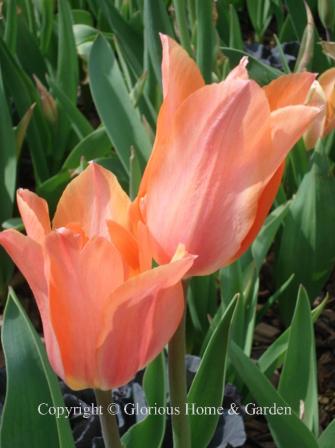 Tulipa 'Perestroyka'
Tulipa 'Perestroyka'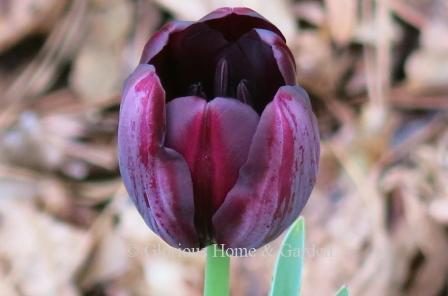 Tulipa 'Queen of Night'
Tulipa 'Queen of Night'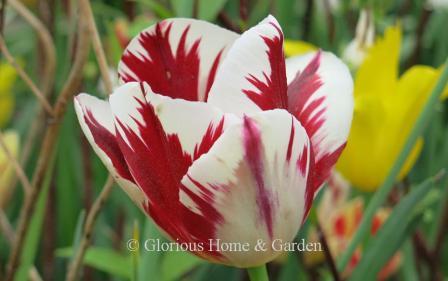 Tulipa 'Sorbet'
Tulipa 'Sorbet'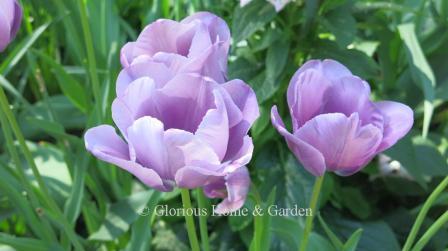 Tulipa 'Violet Beauty'
Tulipa 'Violet Beauty'Division 6: Lily-Flowered Tulips
Lily Flowered, Zones 3-7. These graceful tulips have outward flaring petals resembling the shape of a lily. Some cultivars to try include ‘Anatolia,’ red and yellow with especially sharp-pointed petals 'Ballade,' pink and white; 'Ballerina,' orange; 'Budlight,' yellow and white; 'Green Star,' green and white; 'Mariette,' rose-pink; 'Marilyn,' red and white; 'Red Shine,' red, and 'West Point,' yellow.
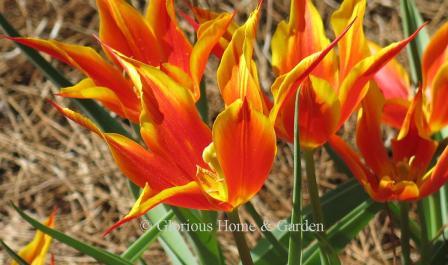 Tulipa 'Anatolia'
Tulipa 'Anatolia'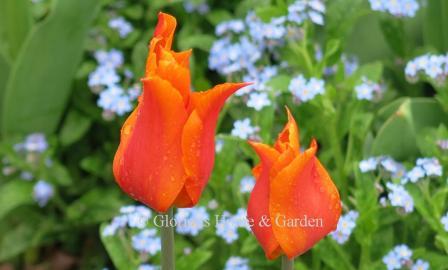 Tulipa 'Ballerina'
Tulipa 'Ballerina'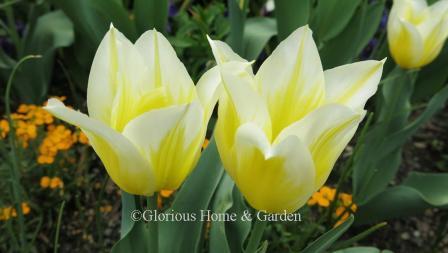 Tulipa 'Budlight'
Tulipa 'Budlight'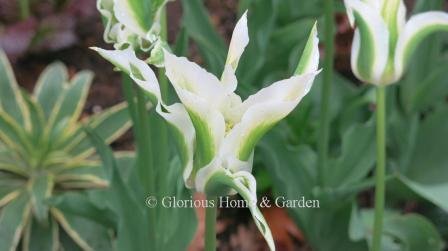 Tulipa 'Green Star'
Tulipa 'Green Star'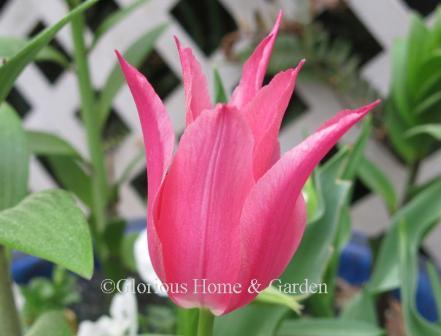 Tulipa 'Mariette'
Tulipa 'Mariette'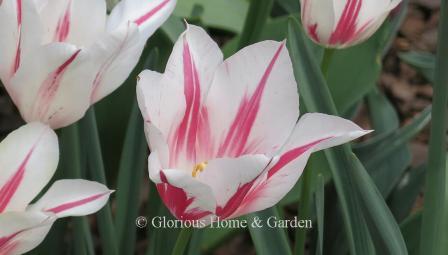 Tulipa 'Marilyn'
Tulipa 'Marilyn'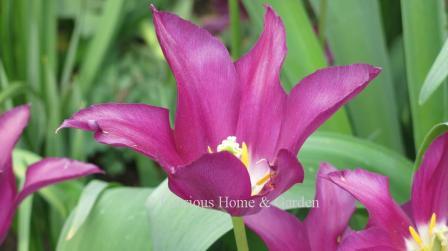 Tulipa 'Purple Dream'
Tulipa 'Purple Dream'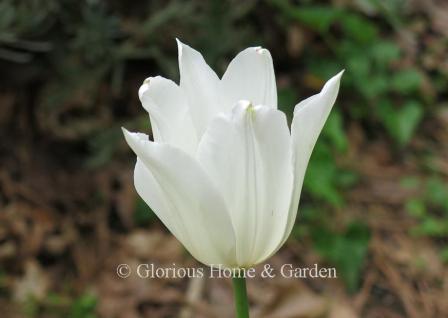 Tulipa 'White Triumphator'
Tulipa 'White Triumphator'Division 7: Fringed Tulips
Fringed, Zones 3-7. Fringed, sometimes called Crispa, tulips have finely cut edges that look like they were tipped with frost, or dipped in salt on the edge of a margarita glass. 'Cummins,' lavender-blue with contrasting white fringe, is one of the most distinctive; 'Daytona' is pure white; 'Flaming Baltic' is white with raspberry flames; 'Fringed Elegance' is soft yellow with a touch of red; 'Honeymoon' is white; 'Max Durand' is purple; 'Santander' is pink; and 'Sunset Miami' is magenta-pink edged with golden fringe.
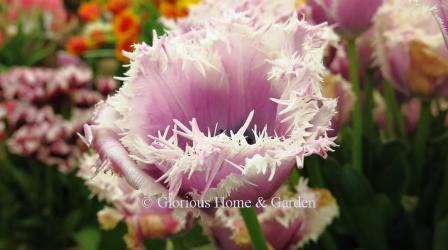 Tulipa 'Cummins'
Tulipa 'Cummins'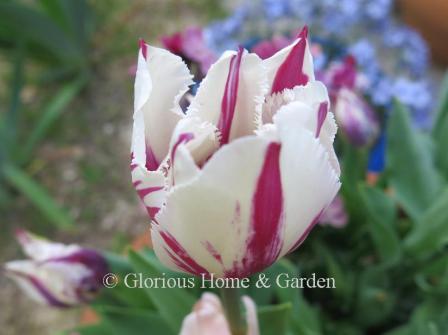 Tulipa 'Flaming Baltic'
Tulipa 'Flaming Baltic'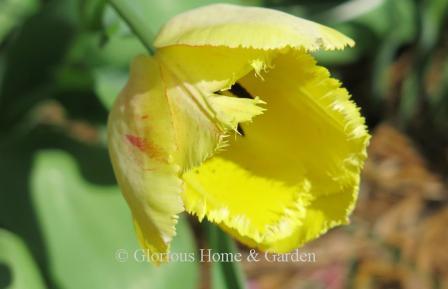 Tulipa 'Fringed Elegance'
Tulipa 'Fringed Elegance'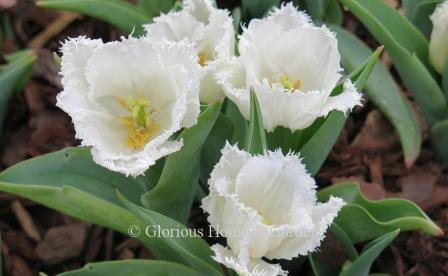 Tulipa 'Honeymoon'
Tulipa 'Honeymoon'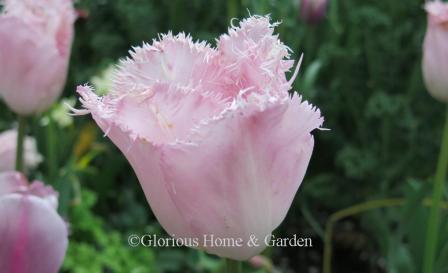 Tulipa 'Santander'
Tulipa 'Santander'Division 8: Viridiflora Tulips
Viridiflora, Zones 3-7. Viridiflora tulips are available in many colors, but their common characteristic is some green in their petals. Some nice ones are 'Artist,' a stunning combination of salmon, rose and green; ‘China Town,’ soft pink and green; 'Golden Artist,' yellow with red and green; ‘Flaming Spring Green,’ white with streaks of red and green; 'Greenland,' pink and green; 'Spring Green,' white and green, and ‘Virichic,’ deep pink and green.
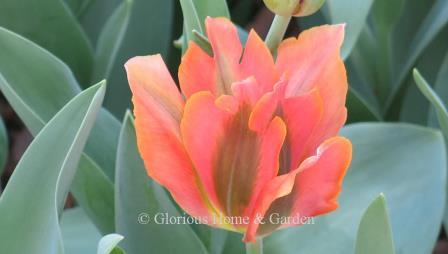 Tulipa 'Artist'
Tulipa 'Artist'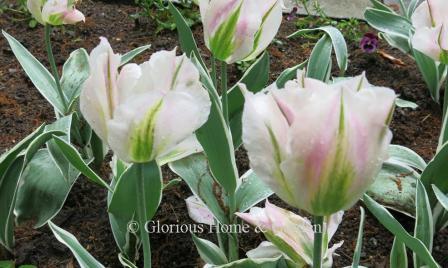 Tulipa 'China Town'
Tulipa 'China Town'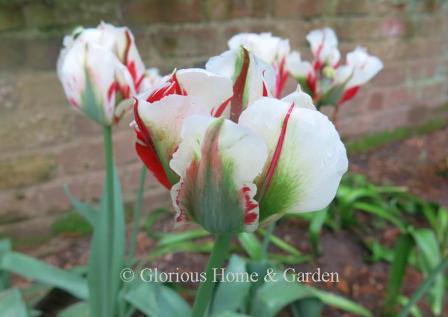 Tulipa 'Flaming Spring Green'
Tulipa 'Flaming Spring Green'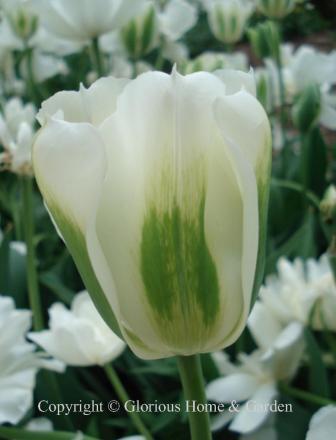 Tulipa 'Spring Green'
Tulipa 'Spring Green'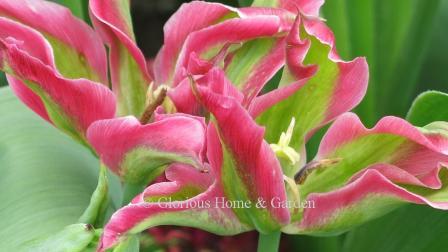 Tulipa 'Virichic'
Tulipa 'Virichic'Division 9: Rembrandt Tulips
Rembrandt
Tulips. These are the famous tulips
that were the heart of the tulip craze of the 1600's and were depicted in Dutch
still lifes by artists of the day.
Rembrandt tulips are characterized by their streaked, broken color
patterns which are a mutation caused by a mosaic virus. While Dutch hybridizers have developed lots
of tulips with variegated color patterns in other divisions through breeding,
true Rembrandt tulips are hard to come by today because the virus that
causes the feathered patterns also makes for weak plants, and so they are not
widely cultivated. Some modern hybrids with a
Rembrandt look include 'Flaming Flag,' white with purple, 'Grand
Perfection,' cream w/burgundy-red markings, 'Prinses Irene,' orange w/purple
flames, 'Rembrandt's Favorite,' a purple and white bi-color--all Triumphs;
'Burning Heart,' white w/red flames, and 'Olympic Flame,' yellow with red
flames--both Darwin Hybrids; 'Flaming
Spring Green,' a mutation of 'Spring Green' with white, red and green--a
Viridiflora; and 'World Expression,' a red and yellow Single Late. Check out www.oldhousegardens.com
if you are interested in some genuine broken tulips.
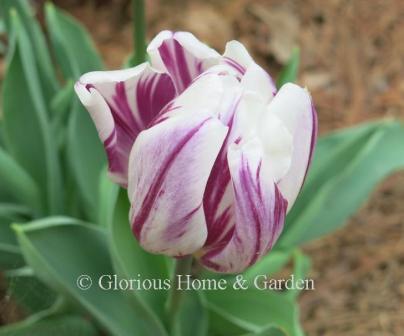 A Rembrandt look-alide, 'Flaming Flag,' a Triumph tulip
A Rembrandt look-alide, 'Flaming Flag,' a Triumph tulip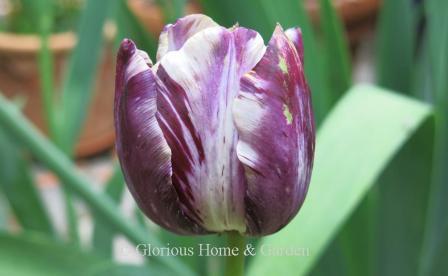 Tulipa 'Insulinde,' a modern broken tulip.
Tulipa 'Insulinde,' a modern broken tulip.This still life by Hans Bollongier, 1639, from the Rijksmuseum, Amsterdam, depicts the streaked patterning in tulips that caused such a high demand for the bulbs in the 17th c.
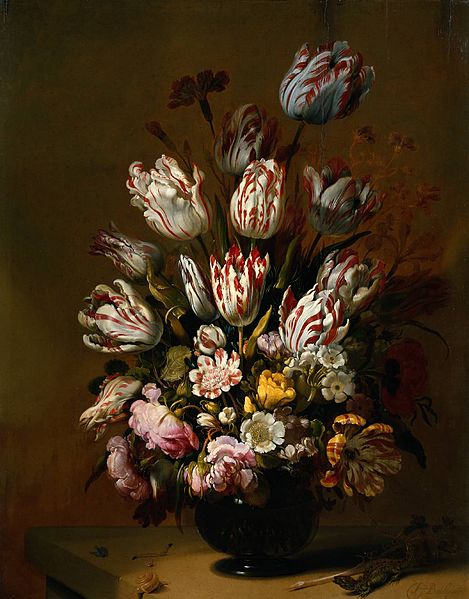 Still Life by Hans Bollongier
Still Life by Hans BollongierDivision 10: Parrot Tulips
Parrot, Zones 4-7. As if tulips in general weren't eye-catching enough, the parrots are the true peacocks of the tulip world. Large, flamboyant flowers often have twisting or curled petals with deeply ruffled or fringed edges , and usually include two colors--often some green as well. They are fun to grow and great for arrangements, but are best treated as annuals as they do not reliably return year-after-year in the garden. Some favorite ones include 'Apricot Parrot,' apricot; 'Black Parrot,' a deep purple; 'Estella Rijnveld,' red and white with a bit of green; 'Flaming Parrot,' yellow and red; 'Rococo,' red with purple and green; and 'Weber's Parrot,' pink and cream.
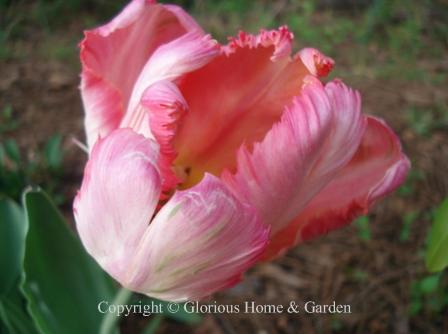 Tulipa 'Apricot Parrot'
Tulipa 'Apricot Parrot'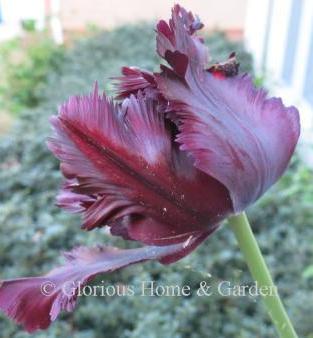 Tulipa 'Black Parrot'
Tulipa 'Black Parrot'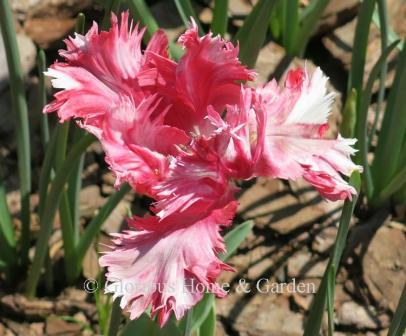 Tulipa 'Estella Rijnveld'
Tulipa 'Estella Rijnveld'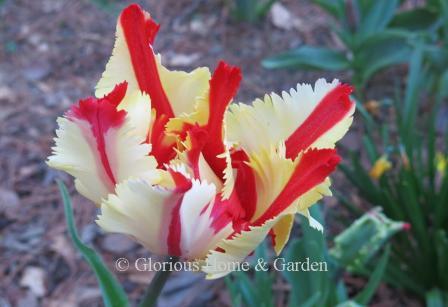 Tulipa 'Flaming Parrot'
Tulipa 'Flaming Parrot'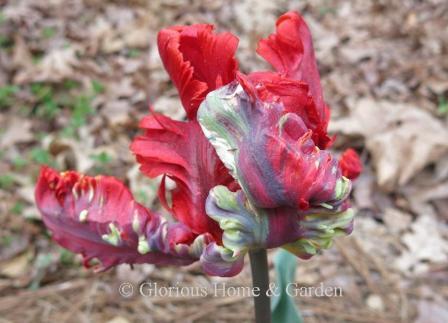 Tulipa 'Rococo'
Tulipa 'Rococo'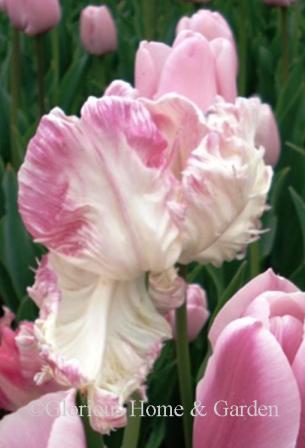 Tulipa 'Weber's Parrot'
Tulipa 'Weber's Parrot'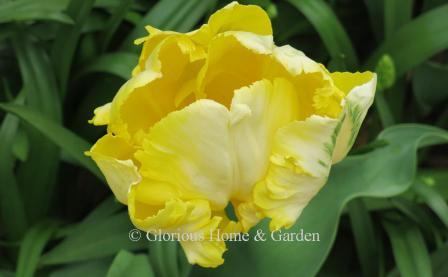 Tulipa 'Yellow Madonna'
Tulipa 'Yellow Madonna'Division 11: Double Late Tulips
Double Late, Zones 3-7. Also called peony tulips, the double lates are large, full, delectable flowers wonderful to grow for arrangements. A huge favorite, 'Angelique,' rose and cream, is shown below. Others include 'Black Hero,' deep maroon-purple; ‘Blue Diamond,’ deep violet-blue; 'Carnival de Nice,' white with red streaks; ‘Danceline,’ ivory with raspberry markings; 'Dream Touch,' deep burgundy edged w/white; ‘La Belle Epoque,’ delicious combination of rose, cream and caramel; ‘Mount Tacoma,’ white; 'Pink Star,' pink; 'Sensual Touch,' orange and fringed; ‘Snow Crystal’ white and fringed; and 'Yellow Pomponette,' yellow.
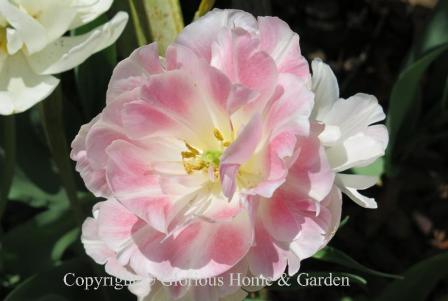 Tulip 'Angelique'
Tulip 'Angelique'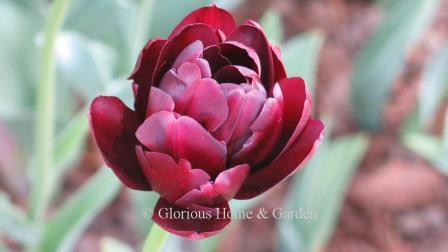 Tulipa 'Black Hero'
Tulipa 'Black Hero'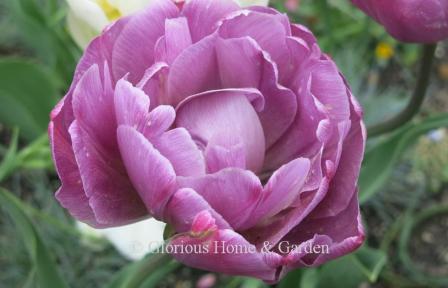 Tulipa 'Blue Diamond'
Tulipa 'Blue Diamond'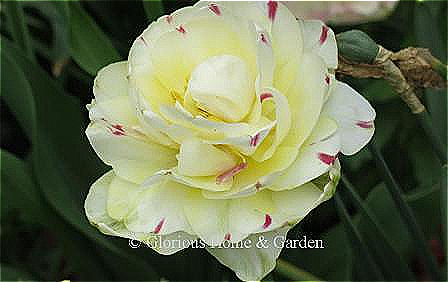 Tulipa 'Danceline'
Tulipa 'Danceline'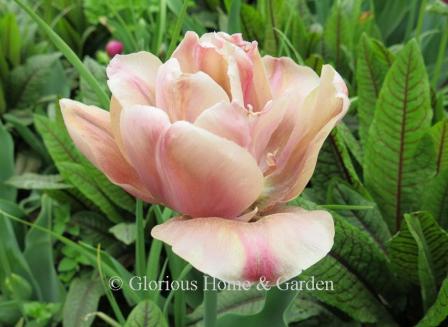 Tulip 'La Belle Epoque'
Tulip 'La Belle Epoque'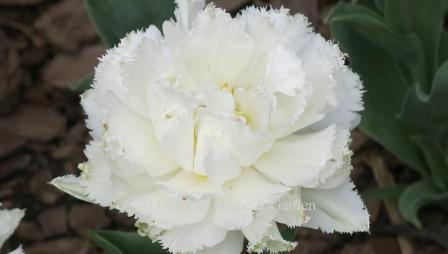 Tulipa 'Snow Crystal'
Tulipa 'Snow Crystal'Division 12: Kaufmanniana Tulips
Kaufmanniana,
Zones 3-8. Also called water-lily tulips
for their wide-opening flowers, Kaufmanniana hybrids are shorter (about
8-10") and are better candidates for naturalizing than some of their
taller cousins. They often have
interesting mottled or striped foliage to add to their charm. Varieties include
'Giuseppe Verdi' (yellow w/red; 'Ice Stick' white w/rose and yellow base; Shakespeare'' red and salmon; and 'Stresa' red w/yellow edges.
Division 13: Fosteriana Tulips
Fosteriana, Zone 3-8. Fosterianas are also called Emperor tulips. They are characterized by large blooms, tall stems and mid-spring flowering. Some choices include 'Albert Heijn,' pink; 'Exotic Emperor,' the double version of 'White Emperor,' white with green markings; 'Flaming Purissima,' ivory and rose; 'Madame Lefeber,' red; 'Orange Emperor,' orange; 'Red Emperor,' red; ‘Sweetheart,’ white/yellow; 'White Emperor,' white; white; and 'Yellow Purissima,' yellow.
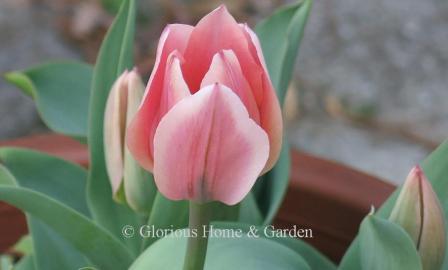 Tulipa Albert Heijn'
Tulipa Albert Heijn'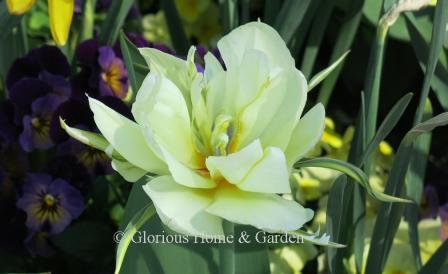 Tulipa 'Exotic Emperor'
Tulipa 'Exotic Emperor'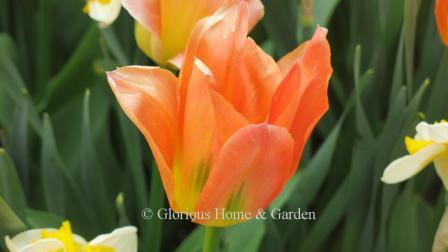 Tulipa 'Orange Emperor'
Tulipa 'Orange Emperor'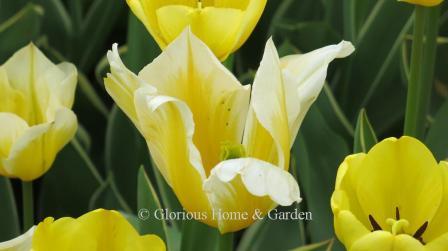 Tulipa 'Sweetheart
Tulipa 'Sweetheart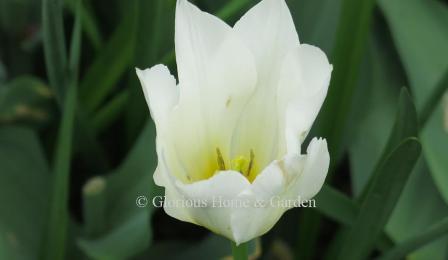 Tulipa 'White Emperor'
Tulipa 'White Emperor'Division 14: Greigii Tulips
Greigii, Zones 3-7. Greigii tulips are well-known for their striped or mottled foliage. Low-growing, they are perfect for groups of bright color near the front of the border. Varieties include 'Concerto,' creamy white w/yellow base; 'Kiev,' red with yellow edges; 'Oratorio,' rose; 'Pinocchio,' red and white; 'Quebec,' rose and cream; 'Red Riding Hood,' red; and 'Tottori,' pink.
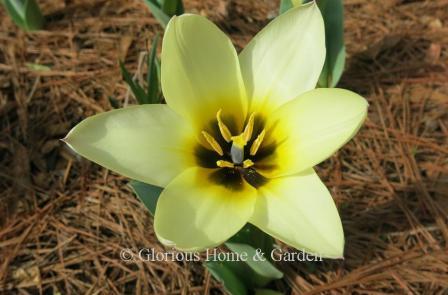 Tulipa greigii 'Concerto'
Tulipa greigii 'Concerto'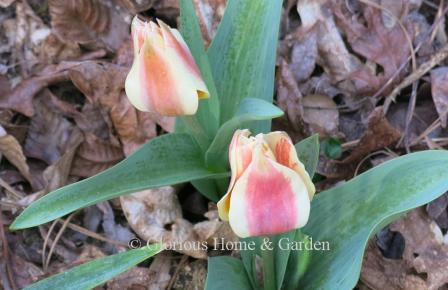 Tulipa greigii 'Quebec'
Tulipa greigii 'Quebec'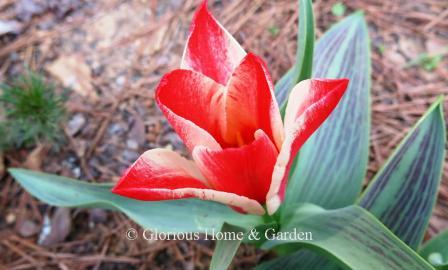 Tulipa greigii 'Pinocchio'
Tulipa greigii 'Pinocchio'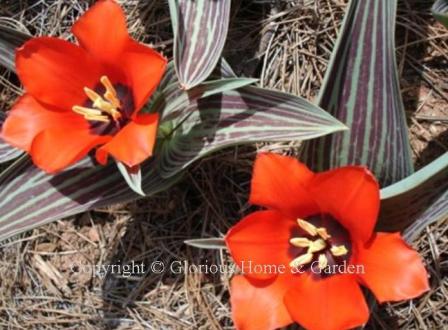 Tulipa greigii 'Red Riding Hood'
Tulipa greigii 'Red Riding Hood'Division 15: Other Species Tulips
Other Species. These are the wild tulips and their hybrids not included in the other categories.
I have been adding a few more species tulips to my garden
each year since they can perennialize and last longer than most of the larger
hybrids. They all prefer full sun and good
drainage. Place them where their cheerful
colors can be appreciated as they welcome spring such as at the front of
borders, along a path, or in containers. As with other tulips, it is very important to allow the foliage to die back naturally to feed the bulbs for next year before removing or mowing. Unfortunately, not deer resistant.
T. clusiana, Zones 3-9. Also called Lady Tulip, this is the sort you would expect to find in a monastery's cloister or medieval herb garden. Charming, dainty and graceful, the Lady Tulip has white petals with the outer 3 (tepals) flushed with pink. Closed they look like peppermint sticks. A fully opened flower reveals a white interior with a deep purple blotch in the center. Good for cottage gardens and the perennial border. 'Lady Jane' is a soft rose pink with white interior and yellow blotch in the center; 'Tinka' is rose with a creamier interior; T. clusiana var chrysantha, (below) the candlestick tulip, has red petals edged with yellow and yellow interiors; and T. clusiana ‘Tubergen’s Gem’ has red on the exterior and bright yellow interiors.
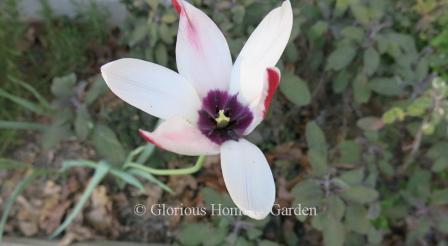 Tulipa clusiana
Tulipa clusiana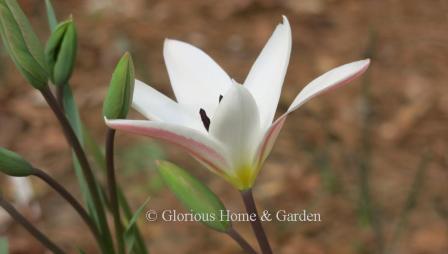 Tulipa clusiana 'Lady Jane'
Tulipa clusiana 'Lady Jane'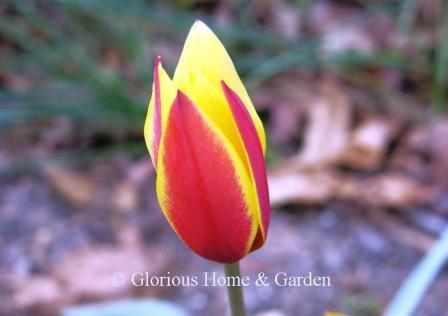 Tulipa clusiana var. chrysantha
Tulipa clusiana var. chrysantha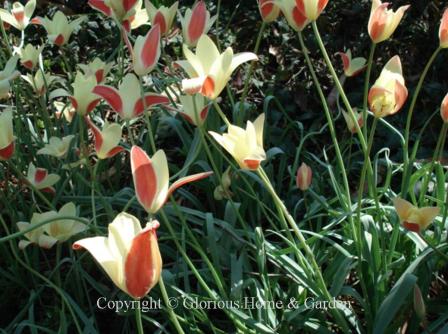 Tulipa clusiana 'Iinka'
Tulipa clusiana 'Iinka'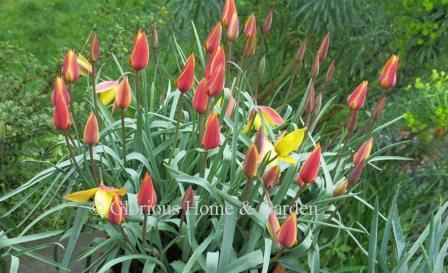 Tulipa clusiana 'Tubergen's Gem'
Tulipa clusiana 'Tubergen's Gem'T. humilis 'Alba Coerulea Oculata,' Zones 4-8. This one has red outer petals that open to white with a deep blue center.
T. linifolia ‘Honky Tonk,’ Zones 3-8. ‘Honky Tonk’ is a lovely small tulip in soft pastel yellow with rose flushes on the exterior. Wonderful to combine with other small bulbs like muscari or miniature daffodils, to naturalize, or grow in containers.
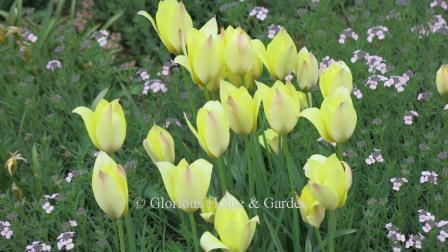 Tulipa linifolia 'Honky Tonk'
Tulipa linifolia 'Honky Tonk'T. saxatilis, Zones 5-10. Blooming in mid-spring, these low-growers (about 6") open distinctive pinkish-lilac petals wide to reveal bright yellow centers. The variety 'Lilac Wonder' (also known as T. bakeri 'Lilac Wonder') is very similar to the species but seems to have broader, over-lapping petals. Both are good naturalizers and have a long blooming period.
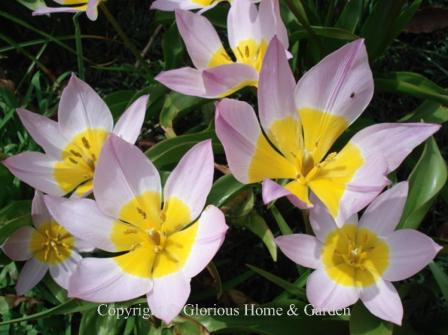 Tulipa saxatilis
Tulipa saxatilis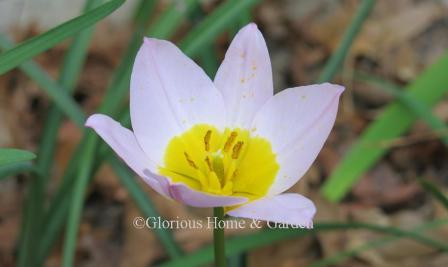 Tulipa saxatilis 'Lilac Wonder.
Tulipa saxatilis 'Lilac Wonder.T. sprengeri, Sprenger tulip, Zones 3-8. Native to Turkey, this species tulip is the last to bloom, opening in late May to early June. Pale yellow-orange elongated buds, often with a green stripe down the center, unfurl to reveal red flowers with pointed tips that open wide like a lily. Good for naturalizing.
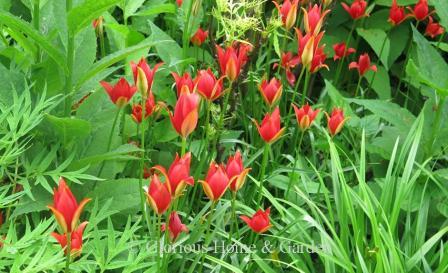 Tulipa sprengeri
Tulipa sprengeriT. sylvestris, Florentine or woodland tulip, Zones 5-8. The woodland tulip is a species with long, narrow grass-like leaves and fragrant flowers in rich yellow. The outer petals are flushed on the back with green. The origins are unclear, but it has naturalized through much of Asia, Europe, and Britain. Though called woodland tulips because they can tolerate a bit of shade, they prefer full sun.
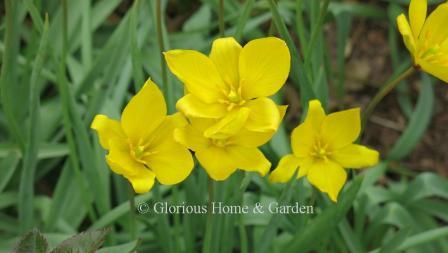 Tulipa sylvestris
Tulipa sylvestrisT. turkestanica, Zones 3-8. A native of Turkey, for which it is named, T. turkestanica is a charming multi-flowered tulip with white petals and yellow-orange centers, with often purple-tipped anthers.
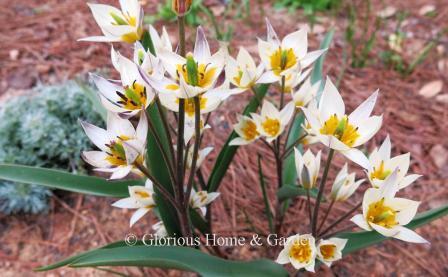 Tulipa turkestanica
Tulipa turkestanicaMulti-Flowering or Bouquet Tulips: While this is not an officially recognized classification of tulips, nonetheless, multi-flowering tulip varieties have one distinct feature. These tulips produce multiple blooms per stem creating instant bouquets and creating a fuller display in the garden with fewer bulbs. However, that is almost all they have in common. Bloom times, heights and flower forms differ from variety to variety because multi-flowering tulips can occur in any of the above 15 official classifications. Here are some varieties to look for: ‘Antoinette,’ a color changing variety from yellow and white with pink maturing to salmon; ‘Candy Club,’ lovely ivory with pink; ‘Happy Family,’ pink with lighter edges;;‘Purple Elegance’ purple with white edges; T. praestans ‘Fusilier,’ a species in flaming scarlet; or T. praestans ‘Shogun,’ brilliant tangerine; and T. turkestanica (see above under Division 15).
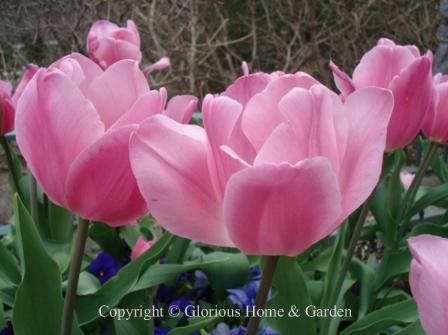 Tulipa 'Happy Family'
Tulipa 'Happy Family'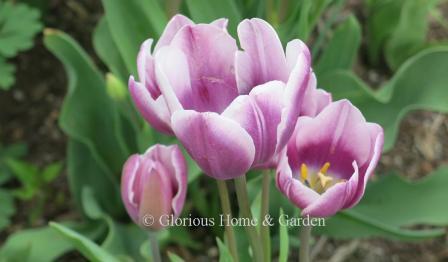 Tulipa 'Purple Elegance'
Tulipa 'Purple Elegance'Plant of the Month
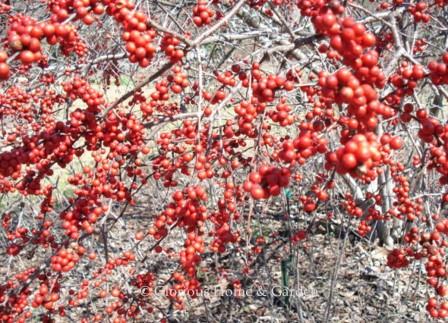
Ilex verticillata
Winterberry holly
Updated new USDA Plant Hardiness Zone Map 2023.